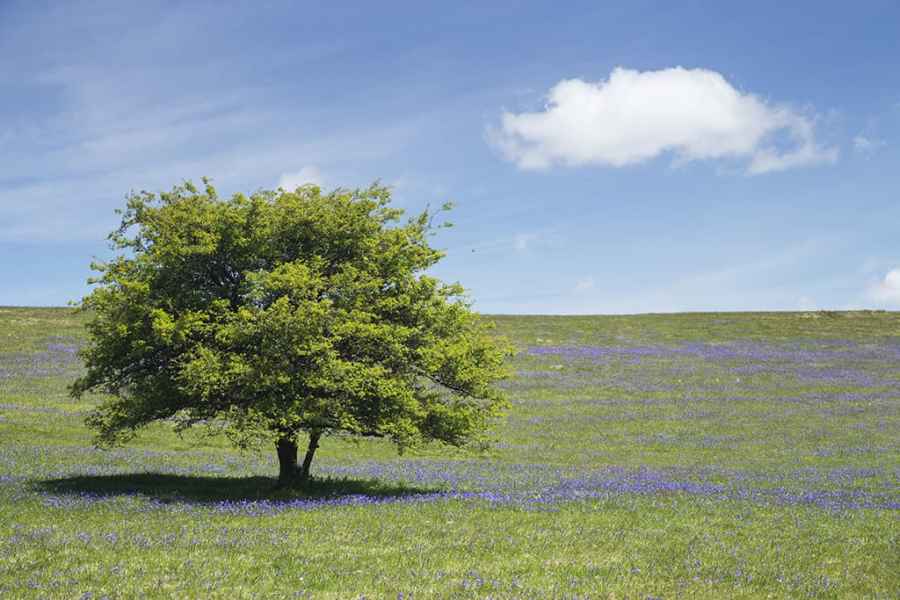
Your guide: David Clapp
David Clapp FRPS is a full-time professional photographer and leads global workshops. An RPS judge for Applied and Travel, he undertakes commissions worldwide, works for Canon UK and is represented by Getty Images. Visit https://www.patreon.com/davidclapp for video-based lessons, Zoom talks and more.

Hawthorn trees and swathe of springtime bluebells at Holwell Lawn, Dartmoor, Devon
Are you making the same mistakes year after year? Are you creating a portfolio of acceptable rather than inspiring images? Are you finding it hard to properly tune in, by exploring your locations and getting the very best images?
Out in the field, photographic decision making can make or break an image, so it’s best to know as many different ways of approaching the subject as possible. Throw your arms wide and soak in the huge vista, but end the study with the smallest of flowers, all taken within a few feet of each other.
Learn to see, to spot variety and capture this through a combination of camera positions, ratios and perspectives.
Since the dawn of photography in the mid 1800’s, we have been trying to place everything we see inside the boundaries of a perpendicular frame. Let us compare this process to a painter, who builds the idea across a canvas.
Firstly, the surface is washed with a mid tone, layers of paint are applied to develop features. Shapes begin to appear; light gives these shapes dimension, as detail begins to emerge through colour and form. Painting is about observing the subject and building the image, yet for the photographer the process works somewhat in reverse.
With the camera held to the eye, the canvas is complete, the painting is finished. It is a process of compositional deconstruction that creates the successful image – ‘I am at the wrong height’, ‘the camera needs to tip forwards’, ‘the perspective should be wider’, ‘I am standing in completely the wrong place’ – learn to move around the subject looking at every detail, the edges of the frame, searching the scene to create a sense of balance, whilst tuning into our emotional responses.
With those distractions and energies now balanced, all it takes is some magical light.
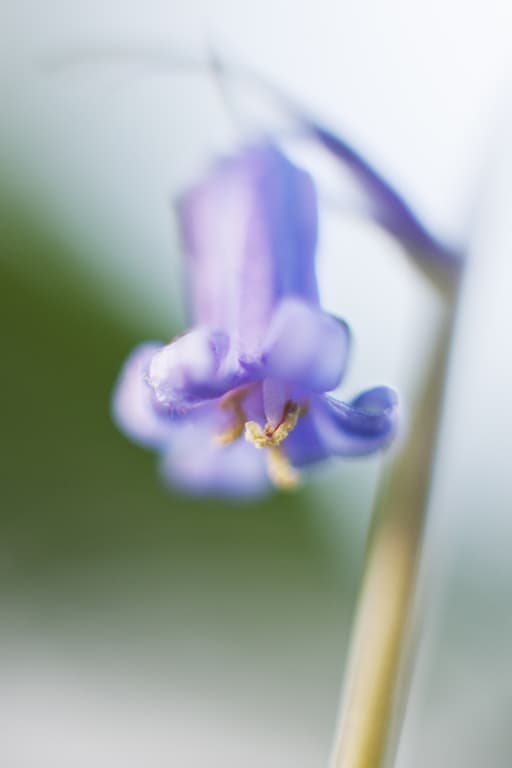
Never forget those all-important detail shots
Add variety
Alongside fully exploring the immediate surroundings, the best advice I can give when approaching a subject is this – landscape, portrait, panorama, detail. Think about every possible orientation and see if all four criteria can be captured from wherever you are.
This will drive you onwards to search for image diversity. This may appear initially unachievable, yet by working hard to capture them all, you will grow as a photographer and begin to understand the value of this relentless pursuit. Initially, one particular orientation or vantage point may appear more obvious than the rest, with a few of the four perspectives unobtainable.
Yet by attempting to satisfy this simple rule of diversity, the results will become progressive, and the camera positioning will naturally change as you learn to see new perspectives. Remember, the true value of these field decisions is revealed later, when critiquing the shoot back in the photographic studio.
What you may have initially considered are the best images may not the best and you will be glad you experimented with diversity.
A change of ratio
Imagine how dreary music would sound if every creation was written in the same time signature and played at the same speed. Photographers have an inherent fear of changing ratio, preferring to force everything into a rather conventional 3:2, instead of experimenting with the score.
A lover of aspect ratios, I long for the day that my high-megapixel digital cameras will all have their own ‘ratio mode’, so I can input my own values and create a system of in-camera cropping. Alter the ratio in-camera to 1:1, 4:3 and 16:9 – they are all glorious to work with.
This is so much easier with mirrorless cameras, yet still most photographers usually cram everything into 3:2. Try waltzing through the landscape. Successful photography is certainly not a stiff march!
Move
Put down the bag and tripod, observe your surroundings and explore, without taking another a step. Try to spot where to shoot from, where to shoot next and imagine the image you will take before unzipping the bag.
Think wideangle, think longer lens and as you notice flowers, rocks or patterns, ask yourself which lenses you need. This is the beauty of spontaneous planning. All of the online research in the world cannot beat exploring a location with your own eyes – get ahead of the rest by absorbing your thoughts in quality ideas.
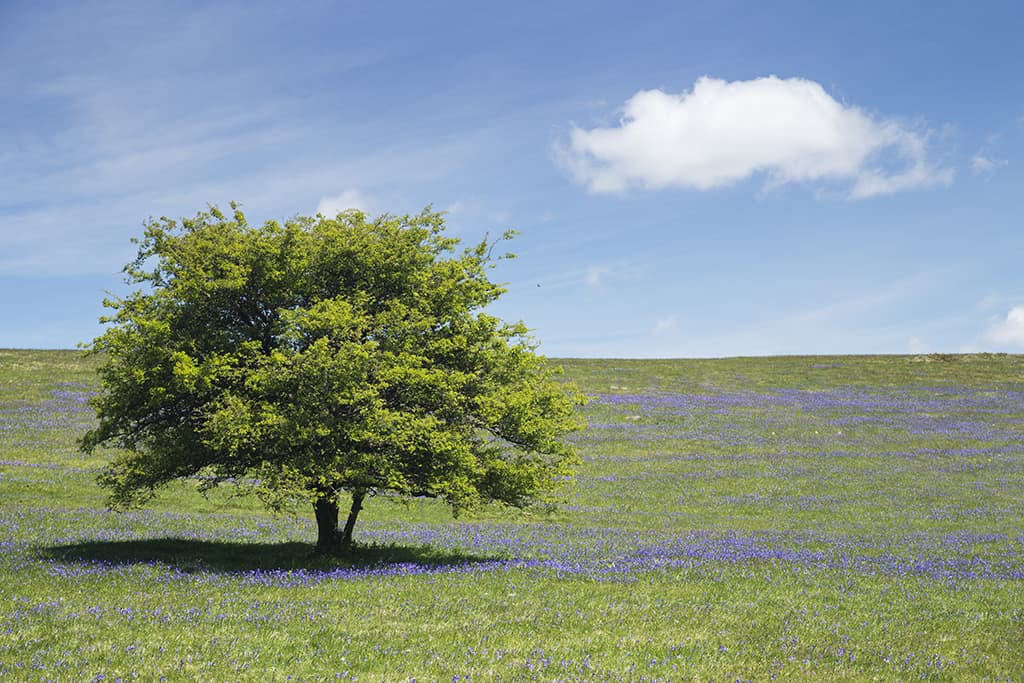
Bluebells and a hawthorn tree at Holwell Lawn on Dartmoor, Devon, England
Why this image works
Visiting locations on multiple occasions helps understand its potential. This open field of bluebells remains a favoured springtime location.
Even if you consider the excessive use of negative space, the result still feels joyous, simply because of the symmetry and the sheer fact that this is such an unlikely find. If you compare the panorama to the image below, it seems far less impactful and ‘everyday’ with the rule of thirds tree and cloud.
The problem here is that the camera position is almost too close, and the airy wide-open feel is lost. It may surprise you to know that this image was taken around 12pm, when the light was at its hardest. Look at the position of the shadow under the tree. Spring landscapes can work at any time of day.
Five steps towards more creative composition
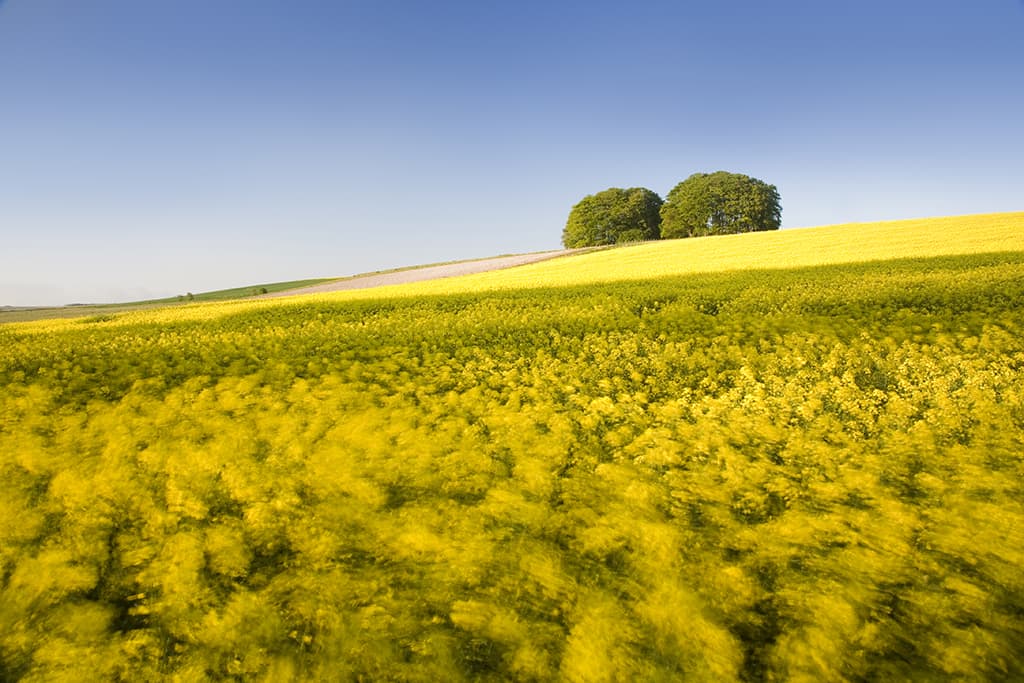
This first image was spotted from the road. Although the initial idea was to take images with front-to-back sharpness, gusting wind unlocked the concept of movement, which was accentuated by using neutral density filters, a 3-stop and polariser placed together to reduce the shutter speed to a second at f/22.
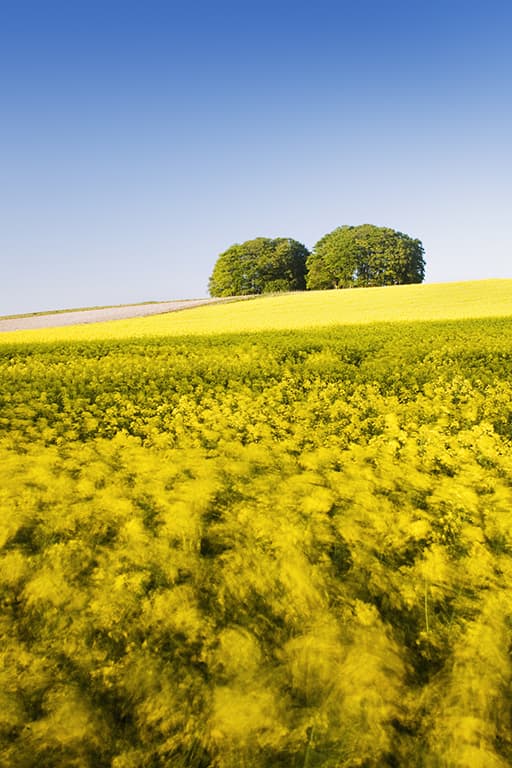
Now a vertical composition is chosen with excess space at the top of the frame. This was designed specifically to give cropping options and increase commercial appeal to the image with extra spacing for editorial clients. It is possible to create a square crop, a 5×4 crop as well as the standard 3:2.
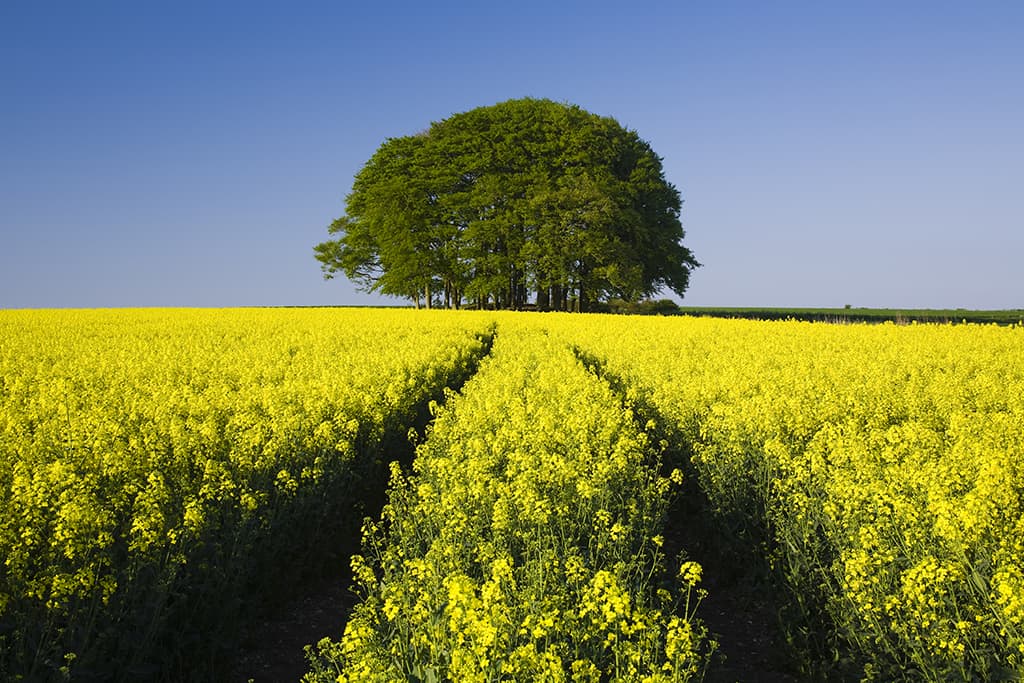
Walking up the hill and into the edge of the field along tractor lines, gave the picture a more dynamic appeal. This is accentuated by the use of lead-in lines. The camera is positioned high to make the lines stand out. A lower perspective would have seen them somewhat lost.

Continuing up the field, past the trees to another hilltop copse, created the strongest shot of the day. This panorama contains it all – colour, sidelight and textures. Standing on the edge of the field, the image is divided in two by the yellows and greens, the trunks providing energy and shaping.
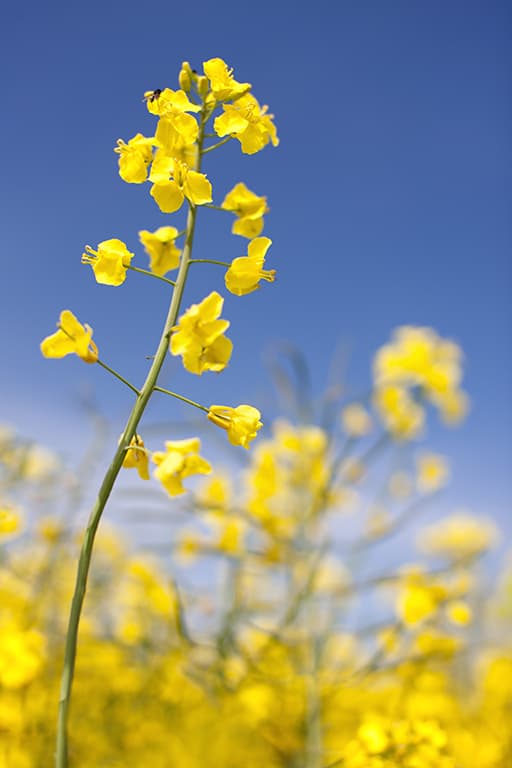
Finally, an all-important detail. The use of a 50mm lens and extension rings gave a wonderful intimacy to this often wiry and unpredictable flower. Note the small fly sat on the top – this was a detail that was unnoticed at the time, but just look at how glorious those colours are.
Further reading
Landscape photography tips
The Landscape round of APOY now open

